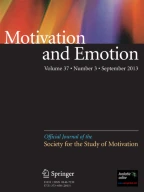
We assembled National Basketball Association and Major League Baseball player performance data from recent years, tracking 3 year periods in players’ careers: pre-contract year (baseline), contract year (CY; salient external incentive present), and post-contract year (salient external incentive removed). In both sports, we examined both individual scoring statistics (points scored, batting average) and non-scoring statistics (e.g. blocked shots, fielding percentage) over the 3 years. Using extrinsic motivation theories, we predicted and found a boost in some scoring statistics during the CY (relative to the pre-CY), but no change in non-scoring statistics. Using intrinsic motivation theories, we predicted and found an undermining of many statistics in the post-CY, relative to both the CY and the pre-CY baseline. Boosted CY scoring performance predicted post-CY salary raises in both sports, but salary raises were largely unrelated to post-CY performance. The CY performance boost is real, but team managers should know that it might be followed by a performance crash—the CY “syndrome.”
This is a preview of subscription content, log in via an institution to check access.
Price includes VAT (France)
Instant access to the full article PDF.
Rent this article via DeepDyve